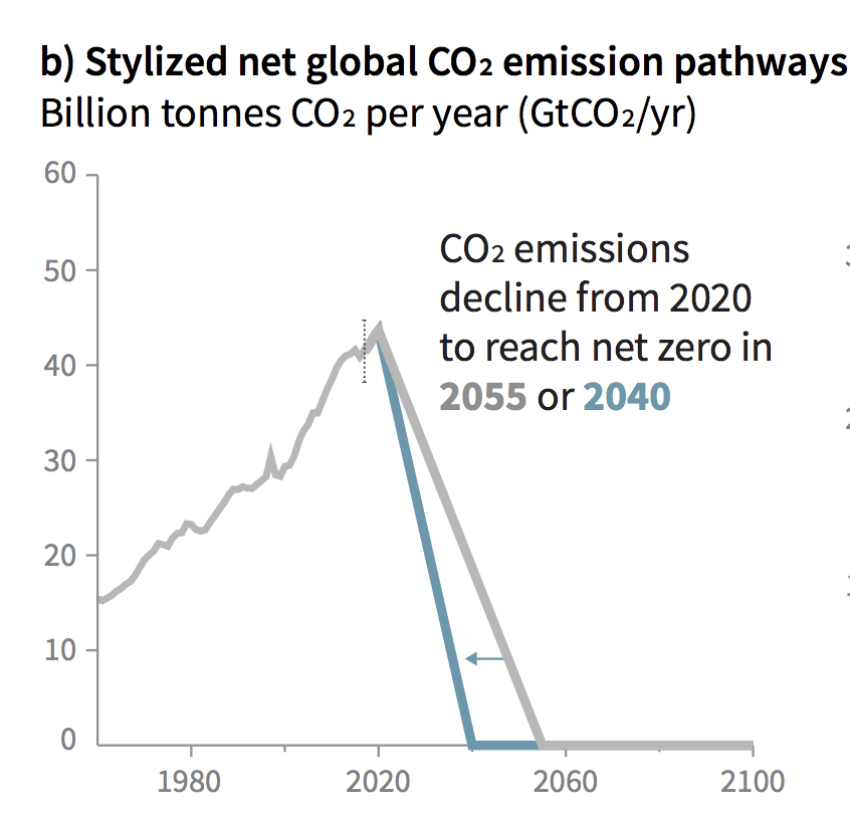
The latest report from the Intergovernmental Panel on Climate Change (IPCC), released on October 8, has called for zero net carbon dioxide emissions by 2050 as the only way to ensure runaway climate change is avoided.
Co-authored by 91 scientists and academics from 40 countries, the report is part of the preparation for the December Climate Change Conference scheduled for Katowice, Poland, where governments will review the 2015 Paris Climate Agreement.
If current carbon dioxide pollution rates continue, global temperatures will surpass the internationally agreed global warming limit of a rise of 1.5°C above pre-industrial levels sometime between 2030 and 2052.
The IPCC report notes that the Paris Agreement’s current voluntary commitments, which supposedly agreed to stop global warming at “well below” 2°C, will not limit global warming to a rise of less than 1.5°C.
By limiting global warming to 1.5°C, the report says, the world has a better chance to reduce dangerous ocean warming and acidity, which threatens marine biodiversity, fisheries, coral reefs and Arctic sea ice.
Seas rises would be limited meaning “greater opportunities for adaptation in the human and ecological systems of small islands, low-lying coastal areas and deltas”, the report notes.
But the IPCC says that to have the best chance of preventing runaway climate change, global net anthropogenic carbon dioxide emissions must decline by 45% from 2010 levels by 2030, reaching net zero around 2050.
Failing to reach low bar
For this to happen there would need to be a dramatic change in current policy settings in most of the industrialised world. There would need to be “rapid and far-reaching transitions in energy, land, urban and infrastructure (including transport and buildings), and industrial systems”, the report says.
The IPCC called for “sustainable development” as “the best support for social and systems transitions”.
Australia, however, has set the bar low: it has committed to a 26% reduction of carbon dioxide on 2005 levels by 2025-2030. Yet, its own department figures show even this is doubtful.
A report by the Department of the Environment and Energy released in December revealed that adjustments were being made to the reduction percentage. Hidden away in the fine print, the report projects that Australia’s total greenhouse gas emissions will be 5% below 2005 levels by 2030, not 26%.
According to The New Daily’s James Fernyhough, greenhouse gas emissions figures released by the government on September 28 show that overall emissions rose by 0.3% in the three months to March 2018.
This is despite there being readily available sustainable alternatives that could dramatically reduce carbon pollution.
Alternatives already available
A new report by scientists at the Australian National University (ANU) found that Australia could have 100% renewable energy by the early 2030s if the current pace of wind and solar development is maintained.
Energy Change Institute director Professor Ken Baldwin said that at the current rate of renewable energy installations, Australia would eclipse its Renewable Energy Target (RET) with 29% renewable electricity in 2020 and 50% in 2025.
Baldwin said Australia could meet its Paris targets through large-scale photovoltaics (PV), rooftop solar PV and wind farms, if the current rate of production is sustained.
However, the RET, which has helped create a private investment boom in renewable energy, is due to expire in 2020.
Professor Andrew Blakers, from ANU’s Research School of Engineering and another of the report’s authors, said the renewable energy industry has “the technical capability to deliver vast quantities of cheap, reliable, secure and zero-emissions energy”.
Blakers said that as Australia is installing wind and solar PV at a faster per capita rate than almost every other country, it is also proving that “it’s not difficult or expensive to make deep and rapid cuts to greenhouse gas emissions”.
In other words, Australia has the capacity to be a renewable energy superpower.
Love affair with coal
But given Canberra’s love affair with coal and gas, this is not going to happen without a well-organised fightback involving community groups and unions.
On the same day as the IPCC report was released, the NSW Department of Planning recommended the approval of the new Bylong coalmine in the Hunter Valley.
The federal Coalition government and Labor opposition are supporting the Adani mega coalmine in central Queensland.
NSW Greens mining spokesperson Jeremy Buckingham said on October 10 that about 1.8 billion tonnes of coal has either been recently approved for mining or is in the planning pipeline. About 778 million tonnes will come from new coal mines, and 1103 million tonnes from proposed expansions.
To prevent runaway climate change, the world needs to move now in a radical, synchronised effort to stop pumping carbon dioxide into the air.
As Dr Joeri Rogelj, one of the report’s contributing scientists, said: “Half a degree of warming can make a world of difference.”